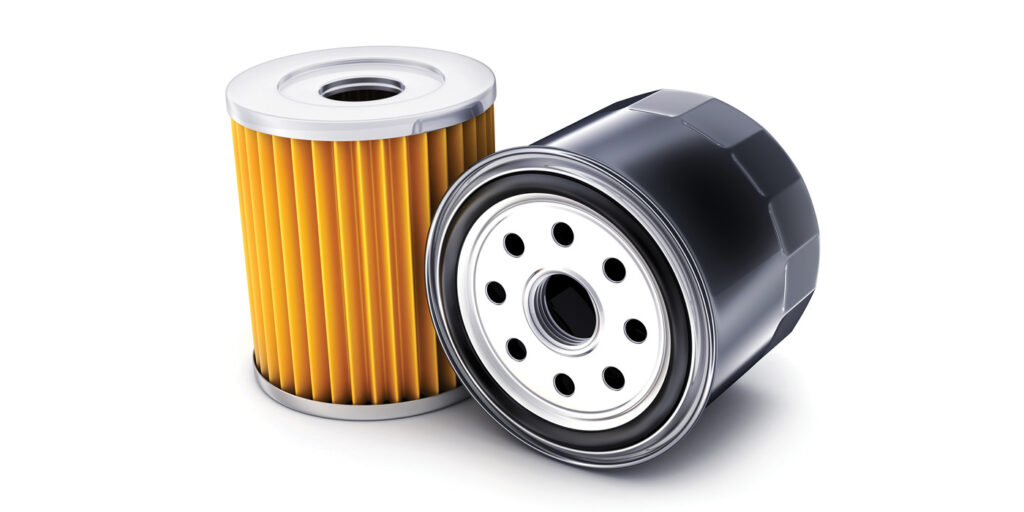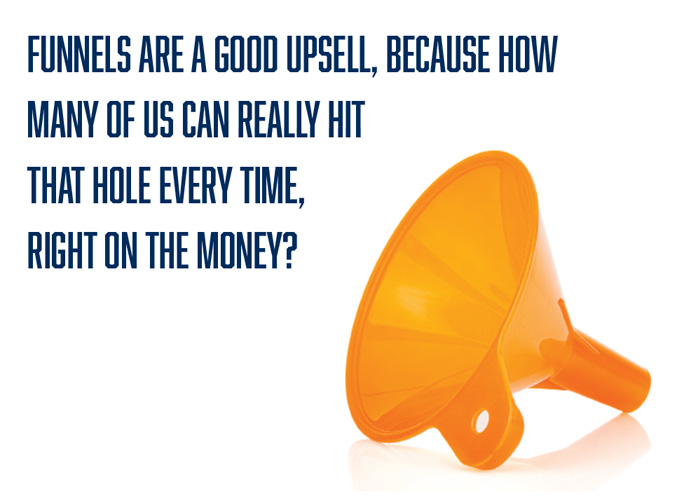Over the years, I’ve been in many different roles in an automotive shop, from sweeping and washing cars to technician, shop manager and owner. As a result, I’ve heard many different approaches to selling oil filters. Many times, I was just listening in, sometimes on the receiving end of a sales pitch, sometimes on the delivering end, explaining to a customer what filter is being used on their vehicle, and why there can be a drastic difference in cost.
Overall, there’s a lot to consider – from both sides – but the best place to start is with the facts. There are multiple manufacturers of oil filters, and as with many things, they’re often branded and sold under different names. Keeping track of who makes what can seem to change quicker than the weather, and as a technician, I always relied on my suppliers – the counter professionals – to keep me in the loop.
Under any given brand, there usually are at least two and sometimes more grades, or quality, of filters. The only real exceptions are OEM-branded filters, which generally don’t offer options. They tend to offer a top-of-the-line filter. But no matter how you stack it, quality is the factor that drives the price, and rightfully so, as it also drastically affects the performance.
Selling is all about knowing and differentiating between the levels of filter, and it comes down to the individual components that make up the filter itself. I’ll use a typical spin-on filter as the basis for explanation.
The filter housing is where dependability begins. High-quality steel is important for a tough, sturdy housing, because not only must it protect against pressure surges, but no filter is immune to the possibility of getting hit by road debris, and a sturdy housing also guards against punctures. Additional features such as a non-slip or textured grip applied to the outside simply make it easier to install and remove them.
The seals all might look the same, but they’re all not created equal. It’s generally known to apply a thin film of clean engine oil to the seal before installing the filter. The reason, if your customer asks, is that it reduces the friction that normally builds between the oil-filter flange and the seal, preventing damage and potential leaks. However, the oil also is forced out as the filter is tightened, resulting in high seal friction during removal.
Many filters now use an internally lubricated seal, which is one that’s made with friction-reducing ingredients in the elastomer formula. Not only does this offer additional protection during installation as the oil film is forced out, but it also allows for much easier removal. If you’ve ever removed an oil filter or heard someone talk about one that feels as if it’s been welded in place, you’ll appreciate an internally lubricated seal.
On filters designed for longer synthetic oil-change intervals, nitrile rubber seals offer extended durability and temperature protection.
Now let’s get to the business end, on the inside of the filter. The main components are the media, the relief valve and an anti-drainback valve.
There are different types of media, the most basic being a cellulose type. However, there also is synthetic filter media or microglass media, and many different proprietary media blends as well. This is a science all on its own, but it makes a big difference, and it simply comes down to how much dirt they trap and how long the filter efficiently traps dirt while allowing for proper, unrestricted oil flow.
The relief, or bypass, valve is designed to open and allow oil flow under extreme conditions in which the oil is too thick or if the filter becomes plugged. It’s important that this is a well-made part of the filter.
Last but not least is the anti-drainback valve that keeps oil in the filter to provide protection at startup. It’s just one more hidden piece of the oil filter. They all might look the same on the outside, but there’s a clear difference, and ultimately, engine protection depends on what you can’t see.
Selling to the DIYer
Knowing and being able to educate your customer on what makes a quality oil filter gives you the confidence to sell top-of-the-line, every time. But you must be careful characterizing a value-line filter as a low-quality filter – especially if it’s part of your branded line. One approach is to represent a value-line filter as a quality filter that’s designed for more frequent changes, so your customer has the understanding that the filter won’t last as long.
Then you can point out how the different media in a higher-quality filter provides better filtration for a longer period of time, which leads into the additional selling features of more expensive filters. If someone opts for the value-line filter, you’ve still given them the feeling they’re getting a quality filter.
I also like to use the “positive-reinforcement” approach. Many people will come through the door with a pre-conceived notion of the best filter there is, or a filter brand they prefer. When a customer asks for a certain brand, then asks you what you think of them, you’re always better off agreeing that you, too, like that brand.
By agreeing with a customer’s choice, not only does this build rapport by making them feel knowledgeable, but it also makes them more likely to trust your opinion. Maybe that’s not a brand you stock, or maybe you have a better deal that includes a different filter – for example a bundle offer. Since you’ve already gained their trust by agreeing with their initial choice of filters, you then can easily compare how another brand “has the same quality features,” for example, and if the customer knows that another filter is “just as good” as their original choice, they’ll most likely be willing to buy.
Selling to Professionals
This crosses over into different territory. When you’re selling to a shop or professional technician, you generally don’t have to educate them about the construction and quality of filters. We’re all familiar with the fact that top-line filters are much better, which is why we use those products on our vehicles. Truth be told, I’ve used several different brands of filters over the years, but I always use top-of-the-line. I don’t skimp and I’ve never experienced a filter-related issue, or any oil-related issue for that matter.
As technicians, however, we have other hurdles to jump. More often than not, we’re dealing with oil changes that are way over their interval, and the other big one is price competition. Many of us truly care about the quality of our oil-change services, but it’s a simple fact that one of the most popular forms of marketing to get people into a shop is the lure of an affordable oil change. This approach is highly exploited by shops that simply don’t care about the cars. They’re looking at the bottom line and what they can upsell when the vehicle is on the lift.
Of course, upsells are important and we all do it, but there’s the honest upsell and then there’s the other … a topic for another day. As far as the oil change, there are some established shops that may take the stance of only offering top-of-the-line filters and the cost is the cost, take it or leave it. But due to demographics and local competition, many shops have no choice but to offer inexpensive oil changes, simply to remain competitive and get traffic through the door.
I’ve heard many a sales rep talk down their value-line filters in an attempt to stock the shelves of a local shop with their better and best products. That doesn’t mean they’re wrong about the quality or that we don’t agree as technicians. However, as I just pointed out, we know from the standpoint of running a business that we simply may have no choice but to stock low-line product in order to remain competitive.
One thing you can do to help professional shops is provide them tools – such as counter displays or pamphlets – that explain what makes a top-of-the-line filter different from a value-line filter. This makes it much easier to offer different levels of oil-change services that include higher-quality filters. It’s always our goal to sell top-of-the-line, but you’d be surprised how tough it can be with so many shops offering inexpensive oil changes. The more tools we have to sell top-of-the-line, the more we can stock in our shops.
Upsells
For your walk-in customer or the DIYer, you always should offer an upsell – not from a negative or pushy standpoint, but out of professionalism and sharing your knowledge, making sure they have everything they need to get the job done. Never assume. But, it’s a safe bet that if they need an oil filter, they’re changing the oil too – even if they aren’t getting any oil. They may already have the oil. A drain pan and shop towels are number one. Just ask if they need either, and it’s always best to replace the oil drain-plug gasket.
Funnels are a good upsell, because how many of us can really hit that hole every time, right on the money? I even like the “extra quart of oil for the trunk.” You’d be surprised how many people agree with that idea.
This is more of a rarity, but if they’re working on an older vehicle (pre-catalytic converter), make sure to ask them if they need a zinc additive for the engine oil. Oil-filter wrenches are another good upsell, as well as latex gloves and hand cleaner.
Tech Tips
There are a few extra things you can suggest that can help your customer. One, if the filter is an element-style filter, check the box and make sure it contains the replacement O-rings for the filter housing. Remind them to be sure to use them. Also remind them about using a thin film of clean engine oil on the filter seal before installing.
Some newer vehicles are designed with single-use drain plugs that require special tools to remove. If they have one of these, not only could they be looking for the tool, but they also might ask if you really have to replace the drain plug. The answer is to recommend “yes.” Is it overkill? Some may argue it is, but these are plastic plugs that turn and lock in place, quickly losing their tension with multiple uses. Have I personally ever seen one fall out? No, not yet, but if the manufacturer says to replace them every time, that’s what I do. Nobody wants to take the chance of ruining an engine.
Sharing what you know makes oil-filter sales easy, and it’s the basics like this that brings customers back to your store.














